This past week, Square Enix released a demo version of its upcoming simulation RPG The DioField Chronicle on Steam, PlayStation Store, Xbox Games Store, and the Nintendo eShop. Elapsing over the game’s first several hours, the demo includes around eight combat missions. Your progress can be saved and carried over into the full retail game.
The game is built by a team of “skilled and experienced” developers including character designs by Taiki (Lord of Vermilion III, IV), concept art by Isamu Kamikokuryo (Final Fantasy X, XII, XIII, XV) and composed by Ramin Djawadi and Brandon Campbell of Game of Thrones fame.
Diving in, DioField takes place in the embattled DioField Island, rife with factional conflicts between nobles, and a greater invasion looming from an Empire situated on the continent vying to power it’s magic technology with the island’s abundant Jade. The setting isn’t entirely dissimilar from a World War II analogue, but with all the fantastical trappings of Final Fantasy Tactics. Think swords and sorcery, magic summoned beasts, enemies rising from the dead, and so on.
You assume the role of Andrias, a young man skilled in subterfuge and weilds daggers in combat. Alongside him is Fredret, a mounted unit that has higher mobility on the battlefield, and Izelair, a sword-and-board mercenary who fights at close range. The three of them are pursuing their dreams of protecting DioField and ensuring that a long-lasting peace is maintained, when a chance encounter with a recruiter sees them ushered into the employ of a duke.
While the unit takes on requests on behalf of the citizenry, it is made clear the Duke’s commands are absolute. Seeing no issue with this, the three hastily accept. Further missions see them fight off a traders’ union on behalf of a noble, drive off kidnappers (but for the sole reason of cornering another noble), and escort an archbishop.
What seems to be a mission to protect DioField and ensure peace seems to tick less altruistic mission by mission, plans hatched within the confines of chambers with sound proof panels.
The mansion serves as your hub for commencing quests, talking to your comrades, upgrading weapons and abilities and so on. Unlike in battle scenes, this area is navigated in the third-person, allowing you to wander its halls as you please.


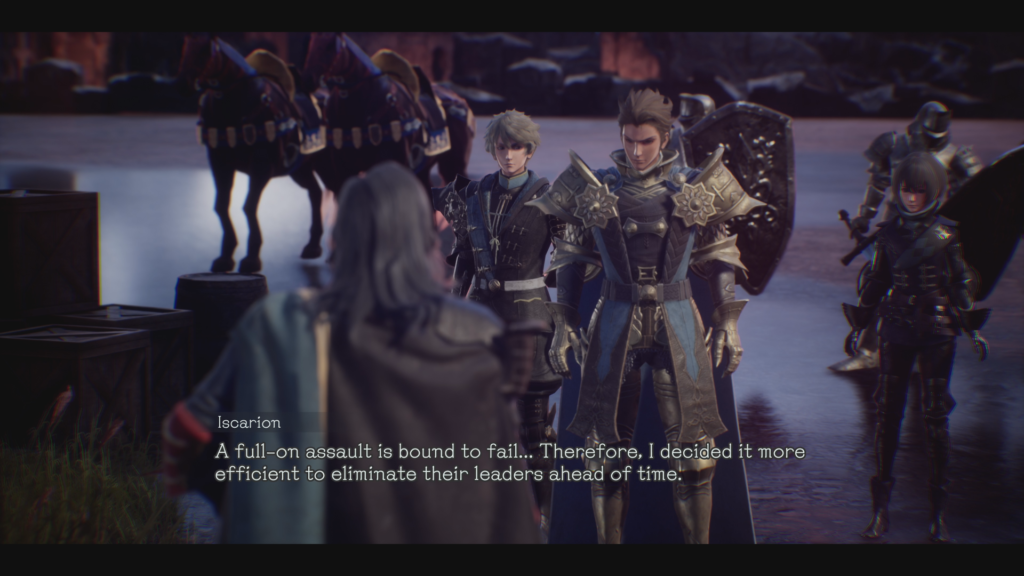



Quests will take you to the battlefield, set on large square dioramas reminiscent of Final Fantasy Tactics. Here, up to four units can be deployed. Instead of directly moving each character with an analog stick, you will instead choose the path they’ll travel. You can move each character individually or with a another button press, select all units to move or attack an enemy unit. The game will slow down to allow for you to manually make your moves.
Positioning becomes a key part of your battle strategy, as moving units to attack an enemy from the rear will deal extra damage if that character doesn’t have an enemy’s attention. Avoiding a pincer attack is also important as your units will take extra damage from behind. Enemies will sometimes spawn in waves, and you may need to protect a barricade or an escort a unit, so being mindful of placement is key. Enemy abilities can also be interrupted with stuns, or by moving out of their range.
Each unit has access to abilities that consume TP and can be used to quickly dispatch enemies, inflict status effects, or to heal allies. While abilities share a cooldown for each character, you’ll want to conserve them a bit for a boss, but avoid being stingy as protracted fights may leave you with less HP than you’re comfortable with. Boss units will also have several nodes of HP to push through, so you’ll want to make use of your resources wisely. Your unit also is gifted a Magilumic orb, with which they can summon fantastical enemies to the battlefield. Bahamut will blast enemies within a certain radius, and Goldthorne will heal your allies and restore their TP. Conserving your resources, and picking up jade orbs around the battle field to replenish them is also helpful in playing the long game.
Navigating all of this isn’t too terribly difficult, even if you’re unfamiliar with strategy RPGs or others of DioField’s sort. I’d imagine those who’ve played Final Fantasy XII feeling a bit at home here, minus anything like Gambits. Combat can also be speed up to double speed if desired.
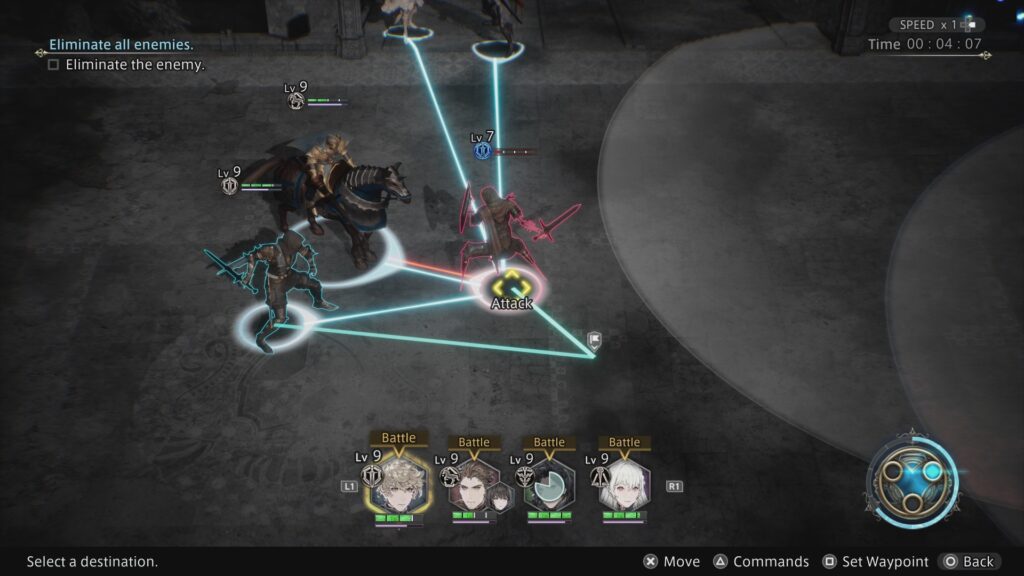
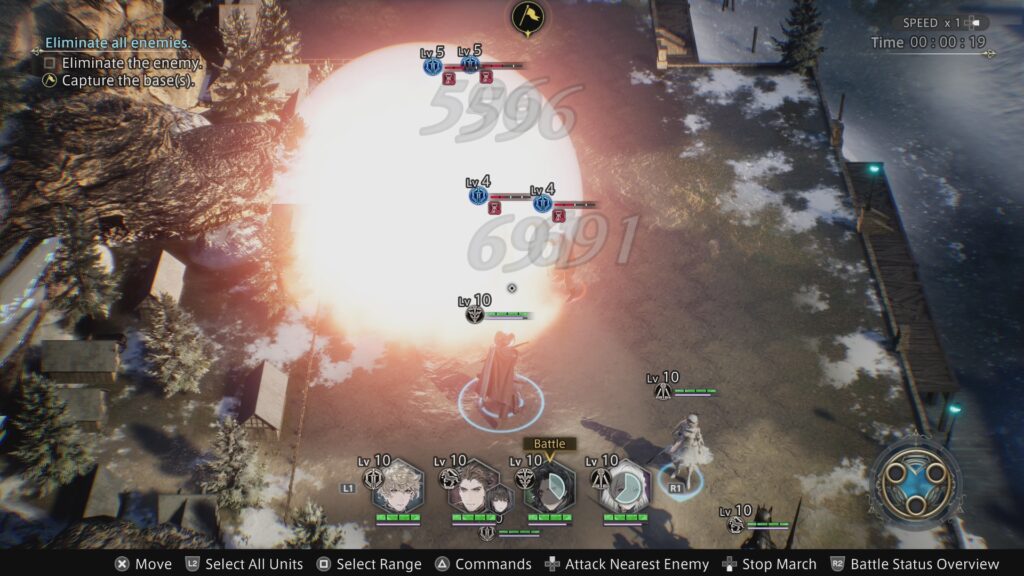




As I mentioned before, you’ll return to your base of operations following the completion of a quest. Here, you can upgrade the members of your unit by purchasing equipment upgrades. Each character also gains Ability Points upon level up, which can be spent on upgrading various passive stats, like increase HP or critical hit rate. However, the upgrades are gated by your unit’s overall level.
Speaking of which, a shared skill tree for entire unit can be developed to learn new combat skills in the four combat classes. SP is earned by completing mission. Additionally, you can review a lot of story information in the Library or replay old quests for extra experience points and Guld to purchase upgrades. Additional magilumic orbs housing summoned beasts can also be acquired by completing their requisite quests.




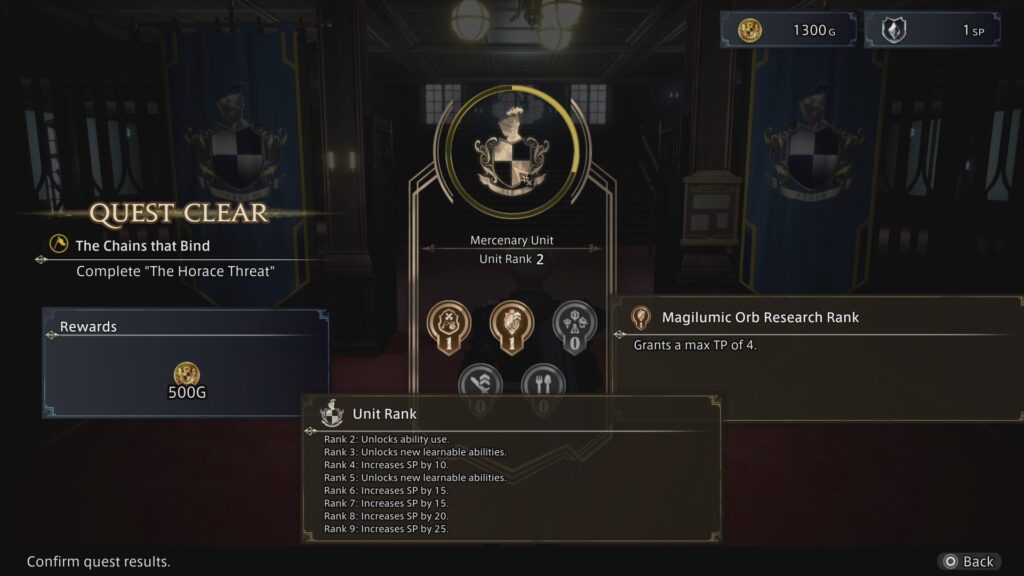

The DioField Chronicle demo provides a good chunk of story and gameplay segments that you’ll encounter, and I enjoyed my time with it. The story so far seems to be setting up larger plays in the full game, so it’s hard to get a confident read and the voice acting is on point. While voice acting doesn’t accompany every scene (
I think it’s got an attractive look, minus the somewhat overdone glowing effects, featuring a heavy lighting contrast and thoughtful use of color that keeps it looking sharp. Diorama style sets battles take place on also look good with a moderate amount of tilt-shift effects reserved for a view mode so that it doesn’t hamper the moment to moment combat.
The battle system’s pretty easy to pick up if you haven’t played a game like this, and the lean, smart tutorials don’t get in the way of you experimenting for yourself. In later missions, I had some close calls as direct effects of poor planning and poor positioning, and staying engaged with the core system concepts led to better outcomes. In the full game however, I do wonder what mechanics will push you to explore the battle system in different ways via map and encounter design. There’s also a hard mode available (or an easy mode for those inclined) so there’s room for a more relaxed or intense experience.
The Diofield Chronicle launches September 22nd on PlayStation 4, PlayStation 5, Xbox Series X|S, Xbox One, Nintendo Switch, and Steam.
You can check out gameplay footage of the demo below:
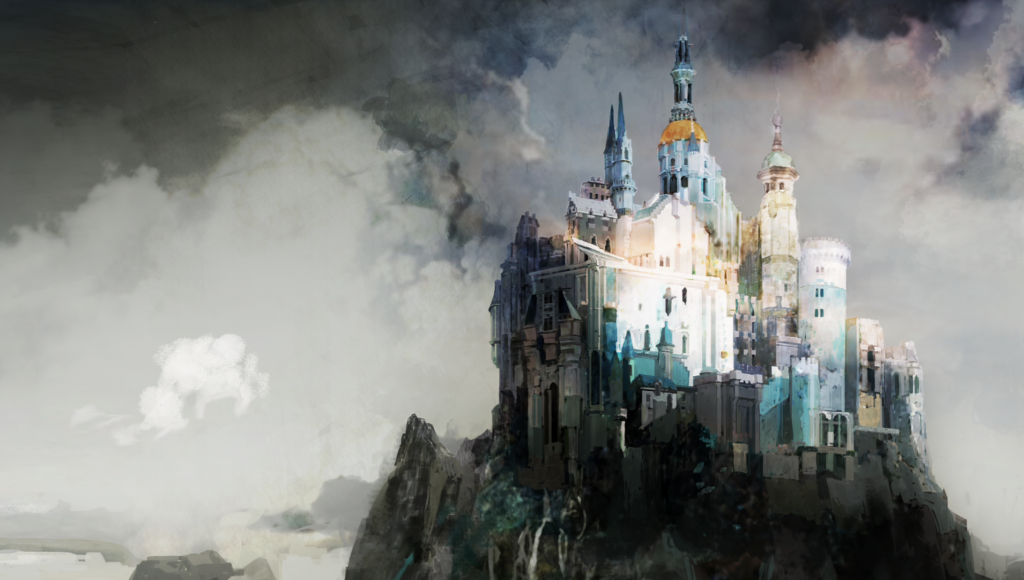
Recent Comments